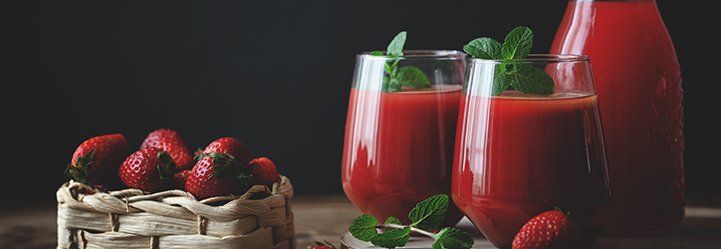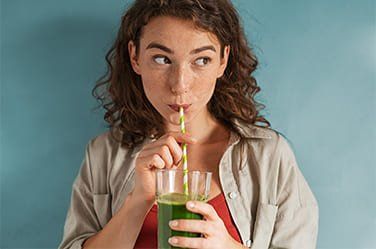Nectar drink: how to integrate fruit purees into its production
Alimentos SAS • Dec 09, 2021
Fruit puree is a top food industry ingredient in products like baked goods and dairy. Beverage manufacturers are no strangers to the benefits of integrating it in their products, including nectar drink companies. Read on to learn more about it.
Nectar drink 101
It is a type of non-carbonated soft drink produced by mudding and diluting fruit flesh. Accordingly, it does not contain 100% pure fruit (Nguyen, n.d.).
The additional essential ingredients in this type of drink include sugar, water, and acid. The minimum of fruit juice varies from 25 to 50% by weight, depending on the country (Food and Agriculture Organization of the United Nations, n.d.).
So, why do manufacturers engage in making it? Simply put, because some fruits are not great candidates for other types of fruit drinks (Nguyen, n.d., Pfanner, n.d.):
- Some fruits are very difficult to juice, like apricots, peaches, and pears.
- Other fruits are too acidic or pulpy to be consumed pure. Hence, producers mix them with other ingredients. This is the case for black currants, sour cherries, and bananas, for example.
Nectar drink versus other fruit drinks
These are the main distinctions between nectar drinks and other types of fruit drinks (Food and Agriculture Organization of the United Nations, n.d. Nguyen, n.d.):
- A nectar drink is fruit juice diluted with water.
- Fruit juice is made 100% from pure fruit.
- Fruit drinks contain juice. However, they use it in lower percentages than a nectar one.
These clarifications are meant to guide consumers and avoid economic fraud (Food and Agriculture Organization of the United Nations, n.d.)
How is the market doing?
Overall, the fruit juice segments have experienced growth challenges in recent years. Health-concerned consumers are turning away from sugary drinks and becoming more interested in functional products (Tetra Pak, 2020).
Manufacturers have listened. That is why some of them make products to cater to the meal replacement trend, like blends with so-called super fruits. Or the reason why retail aisles now have more options of sugar-free drinks and antioxidant drinks. It is also the driver behind the considerable sales of low and no-calorie beverages in markets worldwide (Tetra Pak, 2020).
Experts consider the health-oriented trend as an opportunity for this drink segment. This situation to do with consumers perceiving it as a somewhat healthier alternative to other fruit drinks. Likewise, rising living standards and incomes influence the global nectar market (Nguyen, n.d.).
Back in 2019, the world’s nectar drink market was valued at 6.189 billion dollars. It promised a considerable compound annual growth rate between 2020 and 2025 (Nguyen, n.d.).
Regarding flavor, orange, guava, mango, apricot, and papaya dominate globally (Nguyen, n.d.). However, aspects like the health trend and pointed interest in more adventurous flavors put forth new players. This is the case for red grapefruit: a tropical citrus fruit with a succulent, juicy, sweet-tart taste. According to FONA’s Flavor Radar, red grapefruit is used most in nectar production, among other applications (FONA International, 2021).
The production process of this drink
There are six essential steps in producing nectar drinks (Nguyen, n.d.):
- Producers select raw, ripe fruit and wash it. Then, they cut off damaged parts in the flesh. Here, they soak the fruit in a mixture of citric acid and ascorbic acid to protect its natural color.
- Afterward, they remove the cores and peels before heating the fruit and pulping it.
- Then, they mix it with water, sweeteners, and sometimes other additives.
- Next, they use a vacuum degasser to remove any air.
- The product is then packaged and sealed.
- Finally, they sterilize it with heat and cool it down.
In this scenario, using fruit purees poses substantial benefits. Manufacturers that choose them forego all stages regarding fruit procurement and processing.
Purees are also outstanding ingredients, as they tend to retain taste and nutrients from fresh fruit (Dohler, n.d.). They also serve as a more natural sweetener (Grand View Research, 2020). In fact, the beverage industry has the highest volume share of the global fruit puree market at 29%. Producers use it as an additive to enhance flavor and nutritional content (Persistence Market Research, 2021).
Moreover, purees are highly efficient in terms of logistics and handling (Dohler, n.d.).
As seen, fruit purees can be easily integrated into
nectar drink production with prominent benefits for producers and consumers alike.















